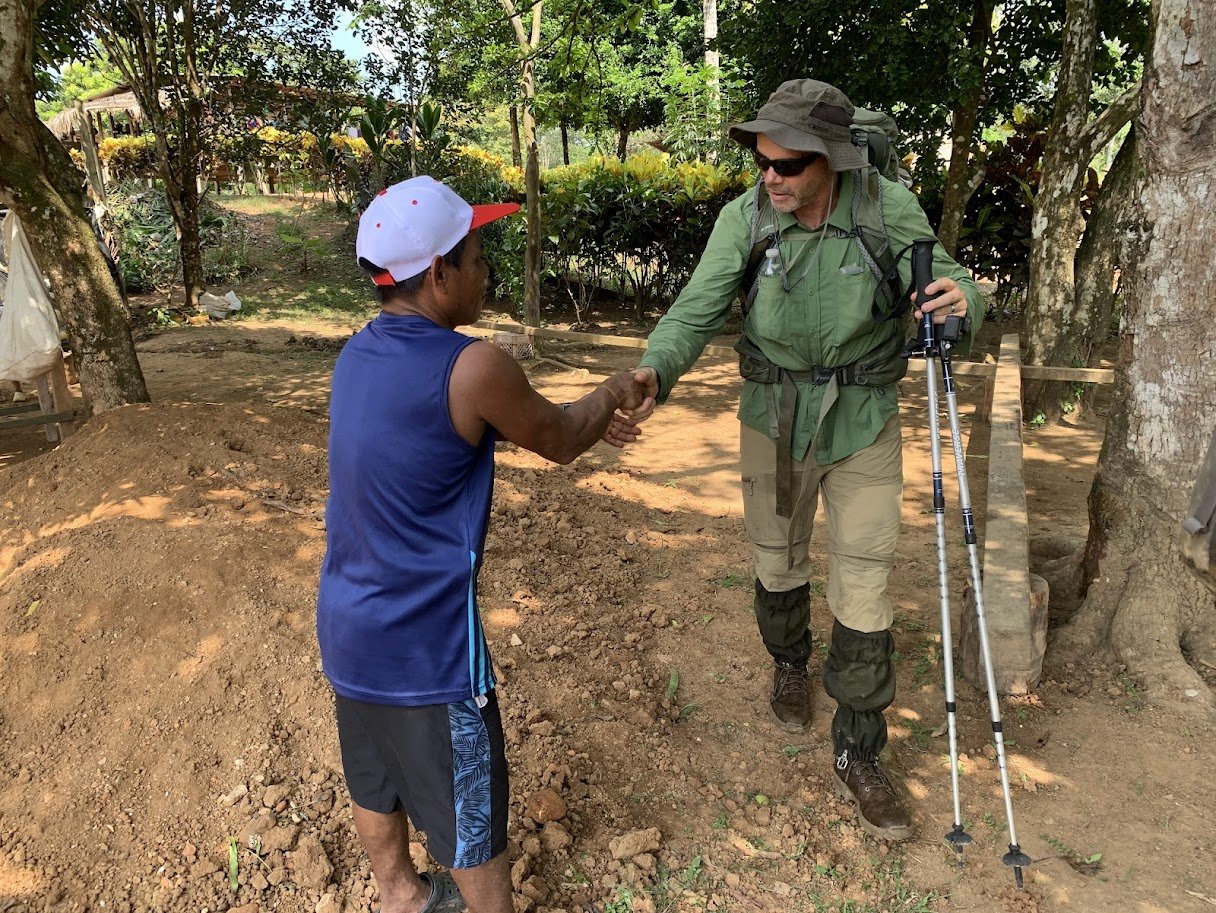The Invisible Leader: Manage Risk Without Saying a Word
In the world of jungle expeditions, leadership doesn't always come with a whistle or a radio. It often comes in the form of a subtle nod, a deliberate step, or the simple act of remaining calm when everything else isn’t.
True jungle leadership isn’t loud — it’s quiet competence.
In remote, high-risk environments, the best guides often lead without saying a word. They know that shouting instructions or micromanaging every step isn’t just exhausting — it can be counterproductive.
Instead, they influence through behavior, body language, habits, and emotional tone.
We call this invisible leadership, and in the jungle, it may be the most important skill a guide can develop.
Leadership Starts with Movement
Movement is communication. In a dense jungle trail, team members often can’t hear or even see the guide clearly — but they can follow movement.
A seasoned guide knows this. Their body language becomes the compass. If they move quickly, others pick up the pace. If they slow down, the group becomes more cautious. If they stop and listen — even briefly — the entire team does the same.
Let’s say you're approaching a river crossing. A verbal warning helps, but it’s the guide who takes off their pack, scans the current, and carefully selects a line who truly sets the tone. Their movement says: this is important, watch me.
These patterns create a culture of attention, where risk is reduced simply because people are paying attention — to you.
Awareness as a Tool of Leadership
Jungle environments are dynamic, alive, and unpredictable. Wildlife, weather, terrain, and human factors all shift constantly. A good guide sees the pattern and acts early.
What sets invisible leaders apart is not just noticing these things — but responding in a way that others can learn from without a lecture.
Example: you hear distant thunder, and without a word, you tighten your pack, adjust your route slightly away from a ridgeline, and pick up the pace before rain hits. Nobody had to ask why — they saw your reaction and followed.
Over time, your team learns to read the environment better because they’re watching how you react. That’s leadership without ego — and with real effect.
Posture, Calm, and Confidence
In emergency medicine and survival psychology, we talk about the importance of command presence — the idea that someone who appears calm and in control reduces panic in others.
The jungle version of this isn’t about barking orders. It’s about how you carry yourself.
Standing tall in moments of uncertainty
Keeping gear organized even when tired
Making eye contact with team members who look unsure
Smiling when others might feel on edge
These gestures — while small — say: I’m still grounded. We’re okay.
In highly emotional or physically draining scenarios, your energy becomes contagious. If you're composed, others feel safer. If you're frantic, fear spreads like wildfire. Non-verbal confidence becomes one of your most powerful tools.
Quiet Risk Management in Action
Much of jungle guiding is risk management in disguise — and often that means creating invisible systems people barely notice.
The best guides don’t lecture on blister prevention every day — they quietly care for their own feet, swap socks midday, or check on others’ boots at rest stops. They don’t need to say “drink water” when they stop and take a long sip in front of everyone.
Risk management becomes behavioral modeling.
People watch and mimic. It becomes a standard — your standard.
Emotional Leadership: The Underestimated Factor
Jungle guiding is emotional leadership as much as it is logistical.
The invisible leader is the emotional barometer of the team. When people are cold, wet, or scared, they watch you. They look for micro-cues that say: Is this normal? Are we okay?
You don’t need to tell them everything’s fine.
You just need to act like it is.
A calm tone during gear checks. A joke over a fire-starting struggle. A patient demeanor when someone slows down. These are powerful tools that defuse tension, foster resilience, and build team trust.
It doesn’t mean suppressing your feelings. It means channeling them in a way that keeps others safe — mentally and emotionally.
Leadership Without Needing Credit
Invisible leaders don’t need to be the center of attention. Their ego isn’t tied to being right or being praised — it’s tied to the mission, to the safety of their team, and to the success of the expedition.
They train harder than everyone else. They study maps before the team even wakes up. They help carry weight without asking for thanks. They guide people to make their own smart decisions — and step back when needed.
This style of leadership creates self-sufficient teams, not followers. And that’s what the jungle demands — adaptability, shared responsibility, and respect.
Closing Thoughts: The Leader You Don’t Even Notice (Until You Need Them Most)
Invisible leadership is not about silence. It’s about intentional action.
In the jungle, trust is built not through titles or talk, but through behavior — calm, consistent, skillful, and humble.
Whether you’re training to be a jungle guide or working in any high-risk environment, remember: your every move teaches. Your presence can be the difference between chaos and cohesion.
So lead well, even — especially — when you’re quiet.
To learn more about jungle expedition leadership, check out our Assistant Jungle Guide Course, talk to us, or any of our growing community of certified guides - We are always here to help!
Please Like and Share - It really helps us!







